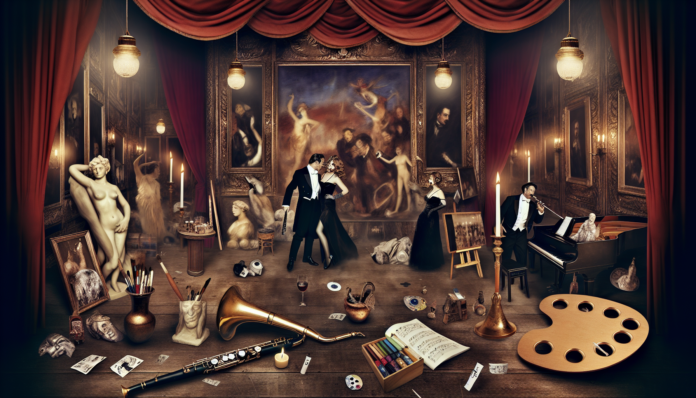Introduction
Gustav Klimt, the Austrian symbolist painter whose work energized the art world in the early 20th century, is often adored for his erotic and emotive depictions of the female form. Klimt’s paintings, rife with sensual imagery and intricate gold leaf, are often believed to reflect his personal life, which was as provocative as his art. The enigmatic artist was involved in numerous affairs, most notably with women who served as his muses—many of them married. These relationships ignited whispers of scandal that reverberated through Viennese society, a time characterized by stiff moral codes and nascent sexual liberation.
The Scandal
Klimt’s infamous love life was punctuated by his passionate romance with Emilie Flöge, a fashion designer and a key muse for many of his renowned works. While their relationship was deeply affectionate, it was cloaked in societal taboos surrounding infidelity, particularly in the conservative climate of early 1900s Vienna, known for its opulent grandeur yet rigid moralism.
As Klimt grew increasingly popular, his various affairs saw him entangled with married women from aristocratic backgrounds, such as the infamous but unnamed object of his “Nuda Veritas,” which holds a mirror reflecting society’s hypocritical standards on female sexuality. More sensationally, his affair with the wealthy and renowned Anna Flöge, Emilie’s sister, led to intense speculation. Though there is no surviving documentation of scandalous indiscretions akin to a modern-day sex tape, Klimt’s relationships with these women certainly caused an uproar.
Contemporary accounts detail how Klimt was perceived as a seducer, with frequent gossip circulating among Vienna’s elite. A local publication once noted, “Klimt weaves dreams of gold, but lo and behold, behind each brushstroke lies the laughter of lady’s aides.” His defiance of societal norms stirred admiration and condemnation, all while inspiring his most famous work, “The Kiss,” which exemplifies the romantic and erotic nature of his relationships.
Moral and Cultural Analysis
Vienna at the turn of the century was a hotbed of contradictions—boasting intellectual enlightenment while still maintaining draconian views on morality and sexuality. Klimt’s relationships were, in many ways, radical expressions of independence and sexual liberation, contrasting starkly with the prevailing norms.
The backlash from Viennese society was swift, with art critics and moralists alike casting judgment on both Klimt and his muses. Many women involved in affairs faced social ostracism; however, Klimt was often romanticized as a tortured genius rather than vilified. His art began to take center stage, somewhat shielding him from the full brunt of scandal due to his burgeoning fame.
Fast forward to today, Klimt’s affairs would likely provoke a different reaction. In the current socio-cultural landscape, attitudes toward infidelity and the exploration of non-monogamous relationships have relaxed considerably, particularly within progressive spaces. Rather than censure, there could be calls for a deeper understanding of the complexities of love and art, and how personal experiences fuel creativity.
Moreover, Klimt’s seductive portrayal of women could be re-evaluated through the lens of contemporary feminist critique, questioning both the objectification in his work and the empowerment of women who became central figures in the narratives he constructed.
As we ponder the erotic brushstrokes of Klimt, we cannot help but recognize the intertwining of love and lust—not just in his masterpieces but in the scandalous lives that left their marks upon both the artist and the society he challenged.

